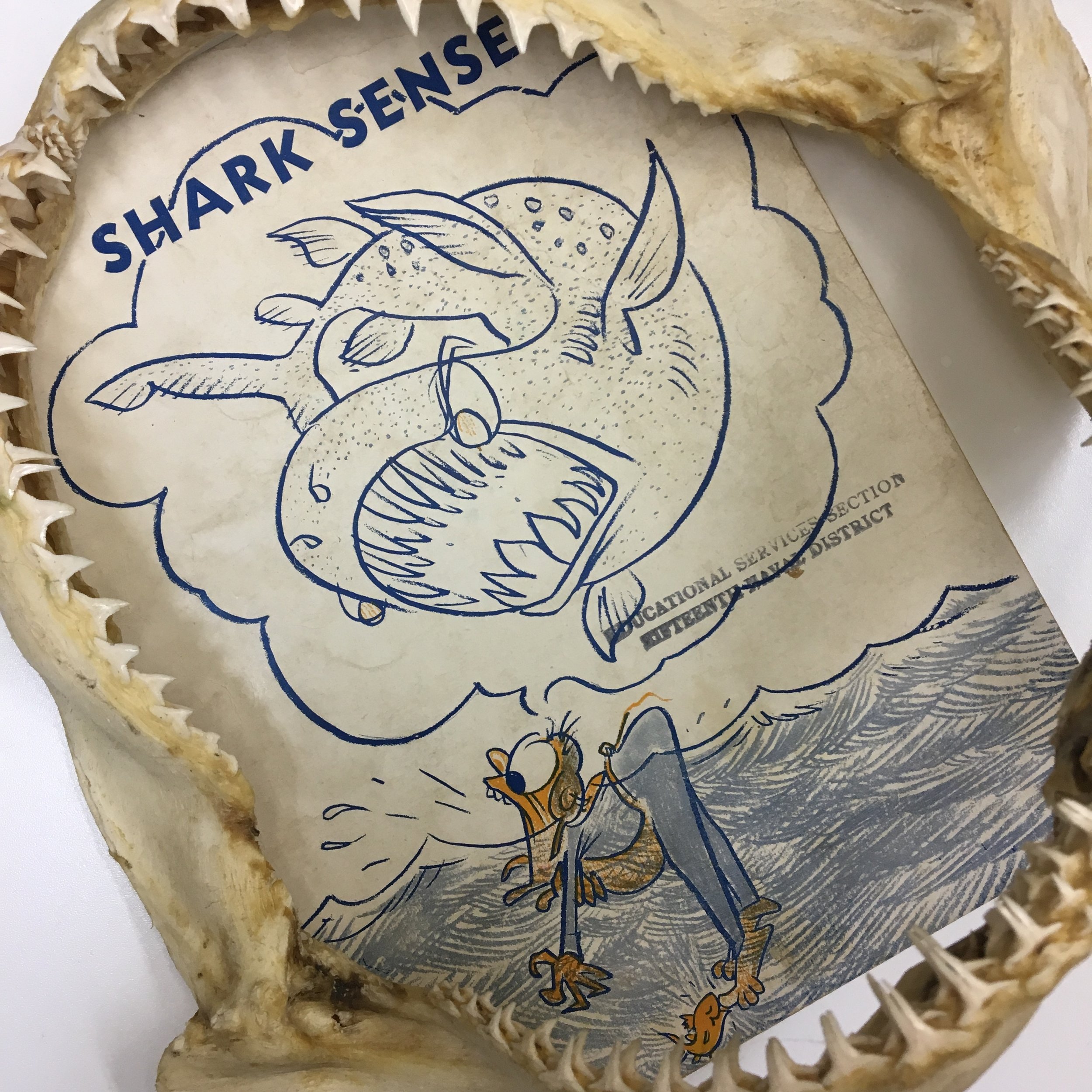SURVIVING THE SHARK
An Exhibition of Historical Shark Incident Response
After the tragedy of the USS Indianapolis, the United States government put pressure on the military to develop solutions for surviving inhospitable waters. These orders were enacted through improvements in life-saving gear and soldier education. Additionally, during WWII the OSS started a shark research division and began experimenting with deterrent and dispatch technology. Since then experimental technologies have included shark repellent, shark chaser, shark darts, shark pod, and the shark shield, all of which can be seen in the Living Sharks Museum.
SELECTIONS FROM THE SHARK SURVIVAL EXHIBIT
SHARK DART COLLECTION
Two different styles of Shark Dart in the Living Sharks Museum collection. Developed initially for the Navy to protect soldiers and Apollo astronauts, Farallon Industries produced a small number of designs for the public market in the early 1970’s. Fitted with a CO2 cartridge, the needle would deliver a lethal burst of gas when injected into the attacking shark, immediately offsetting it’s buoyancy.
PUBLIC AWARENESS & SHARK ATTACK FILES
While the focus of safety from shark incidents had been primarily focused on the military, public awareness campaigns ramped up in the 1970’s (especially after JAWS), making the latest records, studies and facts more accessible. Additionally some forms of repellent and deterrent products became available to mainstream water users. Many of these publications can be viewed in our Museum Library.
SHARK DETERRENT TECHNOLOGY
Developed in Australia by SeaChange (now Ocean Guardian), this Shark Shield scuba unit casts a three-dimensional electric field around the diver that successfully deters sharks, including Great Whites. Many divers prefer this unit still to the newer units because of ease of access to the unit’s power and larger diameter of field. This design was the next step evolution after the successful Shard Pod, proven by Ron & Valerie Taylor.
COMMUNITY WARNING SYSTEMS
Warning! Shark Sighted! In many counties, the local Fire Districts or Fire Departments are the ones that carry out the protocols for public awareness, often involving signage like this one from Morro Bay. Warnings last 5-7 days when presumably the shark has moved on. In New England, shark sightings that don’t involve predation typically close beaches for an hour.
MORE TO COME…






